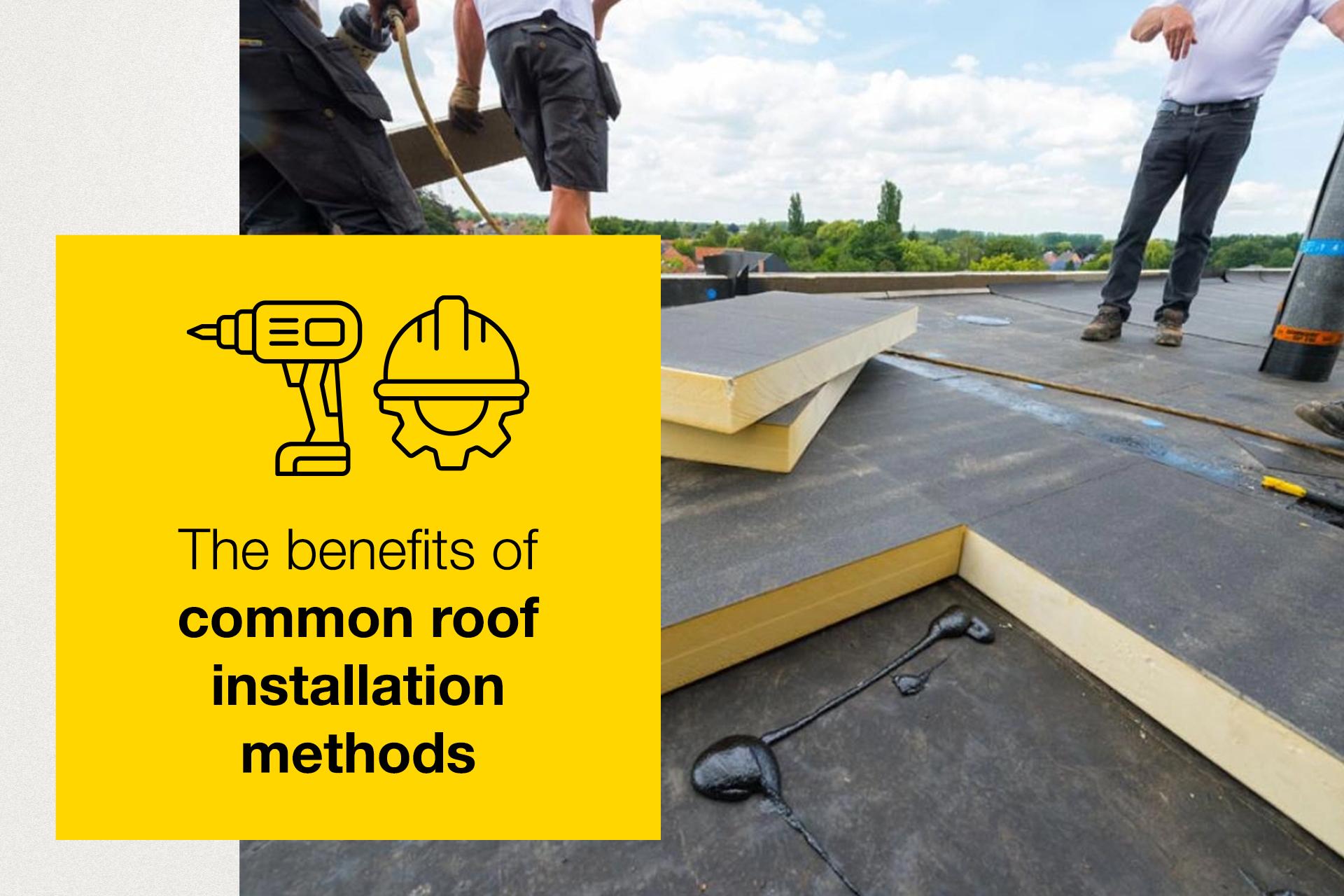Appropriate roof selection is critical to a building’s long-term protection, and compliance with regulation energy standards. For a building owner, a roofing system that meets these requirements whilst supporting a time and cost-effective installation process is the ideal aim.

Securing the waterproof membrane and protecting the insulation as part of a roof’s installation most commonly involves mechanically-fixed, bonded or ballasted systems. But how do the processes compare in terms of installation time and cost efficiencies, and how do they rate in relation to other important performance criteria?
A roof is a building’s key structural defence against the elements. But its performance can be impacted by a range of issues from leaks, faulty installation and poor ventilation, through to waterproofing punctures and penetrations. Each one of these impairments can lead to costly repairs in order to prevent serious building damage. Therefore, choosing a flat roofing application that provides the best level of protection over a protracted time period is of utmost importance. However, appropriate roof specification requires careful planning – there is no one-size-fits-all solution. To help with the decision-making process, it’s worth noting how the three main installation methods compare.
Mechanically Fixed Benefits:
This process involves fastening the membrane to the roof with mechanical fasteners, such as screws and plates. The system usually comprises: structural deck, polyethylene AVCL, foil-faced insulation, waterproof membrane.
- Quick and easy installation, particularly on metal and timber decks.
- Membranes are relatively easy to replace and repair, as fasteners can be easily removed.
- Can easily integrate with various insulation types and thicknesses of insulation, thus enhances the thermal performance of the building envelope.
- Eliminates adhesive costs and delays due to minimum application temperature and curing time
- Allows for better ventilation between the membrane and substrate, reducing the risk of moisture accumulation.
- Most mechanically fixed products can be installed in all weathers, ensuring fewer cost-punitive interruptions and project delays.
Adhered Roof Installation Benefits:
Fully adhered roofing involves securing a single-ply membrane directly to the substrate using adhesives. The installation method creates a strong bond between the membrane and the roof deck.
Benefits of Adhered Roof Installation
- Ease of installation
- Fewer gaps between the membrane and the substrate
- Offers a smart, sleek aesthetic free of visible fixings
- Can be applied to a variety of substrates, including concrete, wood, and metal
Ballasted Installation Benefits:
On a ballasted roof, materials such as stones, gravel, pavers or green roofs are used to hold down the waterproofing system. The system often comprises: polyethylene AVCL, insulation layer, waterproof membrane, ballast.
Benefits of Ballasted Installation
- Reduces labour and material costs by negating a requirement for the majority of mechanical fasteners, adhesives and specialist equipment.
- Ballast protects a roofing membrane from damage caused by foot traffic, allowing safer access for operatives engaged in maintenance or refurbishment.
- Contributes to sustainable building practices, as ballast such as gravel and pavers can be recycled or reused if roof replacement is required.
- Ballast, particularly pavers and green roofs are capable of creating a visually pleasing roof surface that can be designed to complement the building’s architecture and surrounding environment.
The importance of selecting an appropriate roofing system is paramount for any domestic or commercial building project. Engaging with experts can smooth the way to a less stressful specification process and most importantly, result in an application that is regulation complaint and offers robust long-term protection.
As manufacturers of PIR insulation boards that are suitable for use in a wide range of flat and pitched roof applications, Recticel is happy to be a part of the conversation when it comes to roof design and product specification.
Contact our Technical Support Team for insulation advice that is key to delivering your next roofing project to the required standard.
Use our U-Value Calculator
Need a U-value calculation for your next project? Use our free online U-value calculator today!